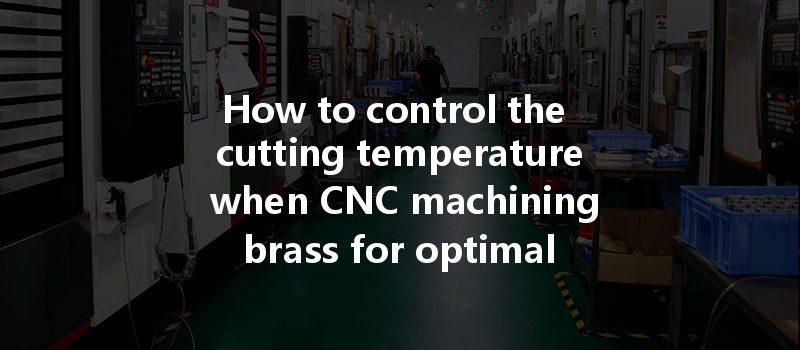Opening
Did you know that the efficiency of CNC machining operations can be heavily impacted by temperature control? In fact, studies indicate that improper temperature management can lead to reduced tool life by up to 50% in metalworking processes. This statistic not only highlights the importance of thermal regulation during CNC machining but also emphasizes its significant impact on productivity and cost-effectiveness. Today, we’ll dive deep into the world of CNC machining, focusing specifically on how to control cutting temperature when machining brass.
Understanding CNC Machining and Brass Properties
CNC, or Computer Numerical Control, machining is a modern manufacturing process that automates the operation of machine tools. By using computer programming to control the machinery, CNC machining allows for high precision and repeatability, essential for fabricating intricate parts in various industries, including aerospace, automotive, and medical sectors.
Brass, an alloy typically composed of copper and zinc, features excellent machinability, impressive strength, and corrosion resistance, making it an ideal choice in numerous applications. However, one of the significant challenges when machining brass lies in managing the cutting temperature. Failure to do so can lead to problems such as tool wear, poor surface finish, and thermal deformation.
Factors Influencing Cutting Temperature
Before we explore methods to control cutting temperature, it’s essential to understand the factors that influence it during the CNC machining process:
Effective Strategies to Control Cutting Temperature
Let’s explore various strategies to effectively control the cutting temperature during CNC machining of brass:
Choosing the right tool is critical in managing cutting temperature. Tools made from high-speed steel or carbide can withstand higher temperatures. Furthermore, applying coatings like TiN (Titanium Nitride) or TiAlN (Titanium Aluminum Nitride) can improve wear resistance and reduce friction, thus helping lower operational temperatures.
Adjusting cutting parameters can significantly impact temperature control. Start with conservative settings, and gradually increase cutting speed and feed rate while monitoring temperature changes.

Implementing an effective coolant system is one of the most crucial aspects of controlling cutting temperature. Here are a few ways to enhance coolant application:
The geometry of brass parts often requires specific tool paths that can affect temperature distribution. Properly planned tool paths can minimize the time the tool spends on a single area, reducing heat buildup.
Incorporating thermal monitoring systems can provide invaluable data about the cutting temperature in real-time. This data can help you adjust your parameters instantly, allowing for a responsive approach to heat management.
Importance of Temperature Control in Brass CNC Machining
Proper management of cutting temperatures during CNC machining of brass plays a particular role:
In the ever-evolving realm of CNC machining, controlling cutting temperatures, especially when working with brass, is an essential aspect that often dictates the success of the operation. From selecting the appropriate tooling and optimizing machining parameters to implementing efficient coolant systems and monitoring techniques, the strategies we have explored can significantly impact tool lifespan, surface finish, and productivity.
In summary, the ability to manage heat effectively not only leads to better quality products but also promotes operational efficiency. In a competitive manufacturing landscape, these factors can distinguish between success and failure. As you continue your journey through CNC machining, consider the importance of temperature control, and explore and implement the best practices discussed here for optimal performance. Keeping these principles in mind can turn challenges into opportunities and help you stay ahead in the industry.






